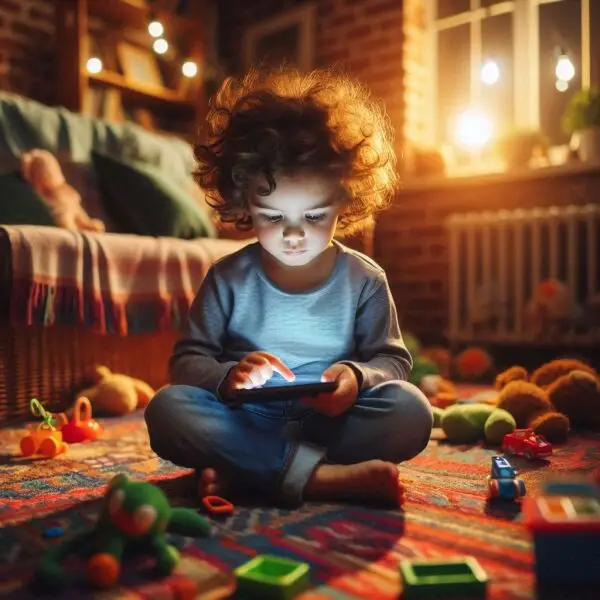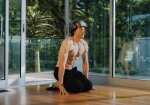Brain rot: social media and mental health, myth or risk?
What “brain rot” is and how excessive social media use affects adolescent mental health: evidence remains limited and how to distinguish adaptive changes from real risks....
Table of Contents
- From meme to fear: “brain rot” under the microscope
- Normal adaptations vs real risks
- What science shows (for now)
- Realistic plan for families and youth
Follow Patricia Alegsa on Pinterest!
From meme to fear: “brain rot” under the microscope
No, your brain doesn’t melt from watching short videos. Nor does it live in a neuronal spa by putting your phone on airplane mode. Reality lies somewhere in between. And the evidence is still walking, not running. 📱🧠
The hashtag “brain rot” appeared on social media as if it were a diagnosis. The term jumped from memes to public conversation and reached high: Oxford chose it as Word of the Year 2024. As a journalist, I saw it in fiery headlines. As a psychologist, I saw the anxiety it generated. And as an astrologer, I’ll just say this: if Mercury retrograde is acting up, don’t blame the Wi‑Fi for everything. 😅
A viral post from a health influencer claimed that “brain rot” shrinks the brain. It cited a 2020 study with 48 young people who used their phones compulsively. Using MRI, psychiatrist Robert Christian Wolf’s team observed less gray matter in areas linked to decision-making, empathy, and self-control. Interesting. But watch out. Wolf emphasized something key: these findings may indicate brain adaptations to a habit, not damage. A huge difference.
Smithsonian magazine documented the phenomenon and included a warning from neuroscientist Ben Becker: using “brain rot” as a scientific label confuses and fuels fears. Becker and Christian Montag reviewed 26 neuroimaging studies and concluded that there is a lack of length, method, and clear criteria to talk about “problematic use.” If you compare people who use their phones 6 hours with others who use them 20 minutes, you might be comparing completely different worlds from the start.
Smartphone addiction? I’ve seen cases with loss of control, irritability without the device, and mood deterioration. I diagnose them as behavioral addiction when criteria are met. But psychologist Tayana Panova nuances this well: repeating something doesn’t make it an addiction per se. The phone serves a thousand functions. Generalizing becomes a trap.
During the pandemic, WHO reported a 25% jump in anxiety and depression among young people. Distress grew and, in parallel, phone use increased. Many people connected the dots and shouted causality. Science says: calm down. That equation is not closed yet.
I suggest you read: How to give our brain a break from so much social media
Normal adaptations vs real risks
The brain adapts. It’s called neuroplasticity. Neurobiologist Parisa Gazerani states it clearly: repeated digital exposure can shape structures, especially in developing brains. Adaptation does not mean damage. It depends on content, context, and the meaning you give to the experience.
Here’s a simple compass to distinguish between adaptive change and alarm signal:
Possible adaptive changes:
- Visuospatial improvements in gamers. You react quickly, process stimuli better.
- Ability to switch tasks without losing track. Not perfect multitasking, but you train focus shifts.
- Authentic social connection. You learn, create, collaborate. That nourishes.
Real risk signals:
- Broken sleep. You stay up late and wake up exhausted.
- Sustained drop in grades, work, or sports.
- Irritability or sadness when you don’t have your phone.
- Isolation. You avoid in-person friends, hobbies, responsibilities.
- You can’t cut back even if you try. You lose control.
In consultations I use a rule that never fails: if the screen displaces what’s vital, we have a problem. If it integrates, it adds up.
Mini exercise: ask yourself today
- Do I sleep well at least 8 hours?
- Did I do 30 minutes of physical activity?
- Did I eat at least once without screens?
- Did I see people I care about face to face?
If you answer yes and maintain your goals, screen time may only need adjustments. If you answer no, it’s worth taking action.
What science shows (for now)
- Small effects. Several large-scale analyses find minimal associations between screen time and adolescent well-being. I’ve seen coefficients so low they don’t surpass eating more fries in their impact on mood. Curious but true.
- Measurement matters. Self-reports fail. Automatic time logs give another picture. Montag insists on this, and he’s right.
- Content and context weigh more than minutes. Passive use that replaces sleep, study, or free play is linked to worse mood. Intentional use to learn, create or connect can protect.
- Blue light at night, enemy of sleep. Late exposure suppresses melatonin. If you cut screens 60 to 90 minutes before sleeping, you improve sleep quality and duration. I see this again and again in patients.
- Previous vulnerabilities. Anxiety, ADHD, bullying, family stress, poverty. All modulate the relationship with screens. Don’t compare everyone with the same yardstick.
A gem for me as a communicator: in Becker and Montag’s review, the big gap was longitudinal studies. Without looking at the same person over time, we can’t say if the phone causes changes or if kids with certain traits tend to use the phone more. Scientific patience. And fewer panic-mode headlines.
Realistic plan for families and youth
You don’t need an anti-screen crusade. You need a plan. I share what works in my practice and workshops with schools.
- The 4S rule: Sleep, School/study, Social, Sweat.
- If screen use respects these four, you’re doing well.
- If one falls, adjust.
Design your weekly “digital menu”:
- Intentional content (learn, create, connect) first.
- Passive entertainment for dessert, in portions.
- Set visible limits: app timers, grayscale mode, batch notifications. Color and alerts trigger impulses.
Shielded sleep routine:
- Passive entertainment for dessert, in portions.
- Set visible limits: app timers, grayscale mode, batch notifications. Color and alerts trigger impulses.
Shielded sleep routine:
- Screens out of the bedroom. Charge your phone in the living room.
- Last hour of the day without phone. Book, soft music, stretches.
- If you study at night, use warm filters and rest windows.
“If-then” protocols (very powerful):
- If I open Instagram, then I activate a 10-minute timer.
- If I finish a class, then I walk 5 minutes without my phone.
- If I feel anxious, then I breathe 4–6 times for 90 seconds before checking notifications.
- Boredom pockets. Three moments without stimuli per day. Shower without music. Short trip without headphones. Waiting in line with eyes on the world. The brain thanks you.
Conversations, not punishments:
- Ask: what does this app give you? What does it take away?
- Co-view with your children. Validate, teach judgment. Avoid humiliation. Shame doesn’t educate.
Weekly well-being audit:
- Review automatic screen time report.
- Choose one lever per week: notifications, schedules, apps. Change one thing, measure how you feel. Iterate.
Connection with nature:
- 120 minutes of green per week reduce stress and improve attention. Bring your phone but as a camera, not as a black hole. 🌱
I’ll tell you an anecdote. In a talk with teenagers I did a challenge: “notification blackout” for 7 days. 72% reported better sleep. One boy told me something I keep: “I didn’t leave my phone; I let my phone let me sleep.” That’s the point.
I’ll close with this. Technology is neither villain nor nanny. It’s a tool. Brain changes exist. Some help. Others harm. The key is how, when, and why you use the screen. Prioritize evidence and listen to your body. If in doubt, seek professional help. And if someone tells you that “brain rot” ruined your destiny, remember: your habits rule more than any meme. You choose. ✨
Subscribe to the free weekly horoscope
Aquarius Aries Cancer Capricorn Gemini Leo Libra Pisces Sagittarius Scorpio Taurus Virgo
-
 Live to be 120 years old: how to achieve it without spending millions
Live to be 120 years old: how to achieve it without spending millions
Millionaire Bryan Johnson spends 2 million dollars a year on his health to live up to 120 years old. I will show you what he does and how you can do it for much less money. -
 Do we drink too much alcohol? What science says
Do we drink too much alcohol? What science says
Recent research on how much alcohol we should consume to reduce risks. New studies highlight the serious implications for public health. Stay informed! -
 Two moments in life are crucial for aging: 40 years and 60 years
Two moments in life are crucial for aging: 40 years and 60 years
Discover how aging affects your metabolism and physical and mental health. Research with Stanford on crucial changes and the importance of diet and lifestyle. -
 Healthy and Delicious Drinks for Summer: Alternatives to Water
Healthy and Delicious Drinks for Summer: Alternatives to Water
5 healthy refreshments beyond water: Perfect for hot days, these drinks take care of your body without sacrificing flavor. Discover them and enjoy! -
 How to Increase Muscle Mass After 50 Years Old
How to Increase Muscle Mass After 50 Years Old
Build muscle after 50: Strengthen and protect your bones against osteoporosis by increasing your strength. It's possible and beneficial!
I am Patricia Alegsa
I have been writing horoscope and self-help articles professionally for over 20 years.
Subscribe to the free weekly horoscope
Receive weekly in your email the horoscope and our new articles on love, family, work, dreams and more news. We do NOT send spam.
Astral and numerological analysis
-
 Discover your future, secret personality traits and how to improve in love, business and life in general
Discover your future, secret personality traits and how to improve in love, business and life in general
-
 Online Dream Interpreter: with artificial intelligence
Do you want to know what a dream you had means? Discover the power of understanding your dreams with our advanced online dream interpreter using artificial intelligence that responds to you in seconds.
Online Dream Interpreter: with artificial intelligence
Do you want to know what a dream you had means? Discover the power of understanding your dreams with our advanced online dream interpreter using artificial intelligence that responds to you in seconds.
-
 Loneliness: A Hidden Enemy of the Heart and the Immune System
Loneliness: A Hidden Enemy of the Heart and the Immune System
Loneliness increases the risk of stroke and heart problems. A Cambridge study reveals that social interaction strengthens the immune system. -
 9 Expert Keys for Deep and Restorative Sleep
9 Expert Keys for Deep and Restorative Sleep
Discover 9 expert keys for uninterrupted sleep. Small changes in your habits can transform your rest into a restorative experience. -
 How Exercise Can Reduce Abdominal Fat: Revealing Results
How Exercise Can Reduce Abdominal Fat: Revealing Results
Discover how regular exercise transforms abdominal fat. Research reveals surprising results in people with obesity. Don't miss it! -
 Demystifying Sexuality: Penis Size and Social Pressures
Demystifying Sexuality: Penis Size and Social Pressures
Discover the myths about sexuality: penis size, social pressures, and pornography. Adrián Rosa, a sexologist from UBA, helps you to enjoy fully. -
 Scientists Discover Hormone that Activates the Desire to Exercise: Get Motivated!
Scientists Discover Hormone that Activates the Desire to Exercise: Get Motivated!
Scientists from CNIC in Spain have discovered a compound that activates the desire to exercise by connecting muscles and the brain. Discover how it boosts your physical activity! -
 Unbelievable! The foods and vitamins that prevent gray hair
Unbelievable! The foods and vitamins that prevent gray hair
Discover the foods that stop gray hair. Learn which nutrients help produce melanin and thus maintain your natural hair color for longer. -
 White tongue? Discover its causes and how to easily prevent it
White tongue? Discover its causes and how to easily prevent it
Do you have a white tongue? Discover its causes, habits to prevent it, and how to treat it. Get your smile back in just two weeks! -
 What does it mean to dream of bricks?
What does it mean to dream of bricks?
Discover the symbolism behind your dreams with bricks. Discover how your subconscious speaks to you through the elements of your dream. Read more here! -
 What does it mean to dream of old people?
What does it mean to dream of old people?
Discover the meaning of dreaming about old people in this article. Learn how to interpret your dreams and get advice on how to make decisions in life, don't miss it! -
 Ben Affleck at 52: drugs, harassment, and scandals
Ben Affleck at 52: drugs, harassment, and scandals
Ben Affleck at 52: the battle against alcohol and depression, his ups and downs with J-Lo, and a career marked by scandals and tough decisions. -
 The Explorer's Routine: a simple exercise to combat cognitive decline
The Explorer's Routine: a simple exercise to combat cognitive decline
Discover the 'explorer's routine': a non-technology exercise that combats cognitive decline and improves your health. Easy to practice and highly beneficial. -
 What does it mean to dream of an injection?
What does it mean to dream of an injection?
Discover the meaning behind injection dreams and how they may reflect your fears and anxieties in this article on dream interpretation. -
 Who are the holy archangels Michael, Gabriel, and Raphael?
Who are the holy archangels Michael, Gabriel, and Raphael?
Discover who the holy archangels Michael, Gabriel, and Raphael are, and why the Catholic Church celebrates their day. Learn about their role in the celestial hierarchy!